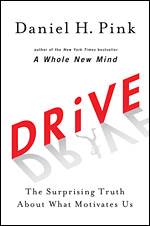I was recently reading an article on “Maintaining a sustainable agile transformation” that listed what it referred to as the “biggest challenges organizations face during an agile transformation”.
One of these challenges that I found interesting was described as “Coaching becoming and end in itself”. While I agree with the intent of the challenge, it identifies a continuing misconception of what is coaching. In my opinion what was being described as coaching sounded more like the work of a consultant and or methodologist.
In my experience during the course of a lean-agile transformation teams often need training on lean and agile values, principles and practices and if they see the value in them, then they can benefit from coaching. Once they ask the question how can we get to an envisioned lean-agile target state? (one of many to be set), the environment is fertile for coaching.
Coaching is not training and not consulting. In my experience a context in which coaching can occur effectively requires these key characteristics.
1. There is someone who wants help addressing a change they would like to make (includes teams).
2. The person or persons involved in the context of the change are actually open to learning and change (they have a “Growth Mindset“)
Then there is the person doing the coaching
- Do they believe that those they are coaching can solve the challenge they are being coached on?
- Are they good at asking relevant, probing open questions? A coach helps those being coached to reframe their perceived challenge so that they may ask better questions to bring better understanding and the ability to identify a possible solution that can be tested. (Sound like the Improvement Kata? it is 🙂 )
- Is the person claiming to be a coach an outstanding listener. Coaching is 10% speaking and 90% listening
If the person you’re considering for coaching in your organization doesn’t demonstrate the characteristics I’ve mentioned above, you might want to look elsewhere or for an alternative role for them. This doesn’t mean that someone who is capable of being a coach can’t also have consulting and training skills, but they do need to know the difference and when it is appropriate to apply each.
Telling someone how to solve their challenges is the realm of consulting, teaching or bad management and not that useful if you’re trying to build a learning organization.

 February 6, 2015
February 6, 2015 







